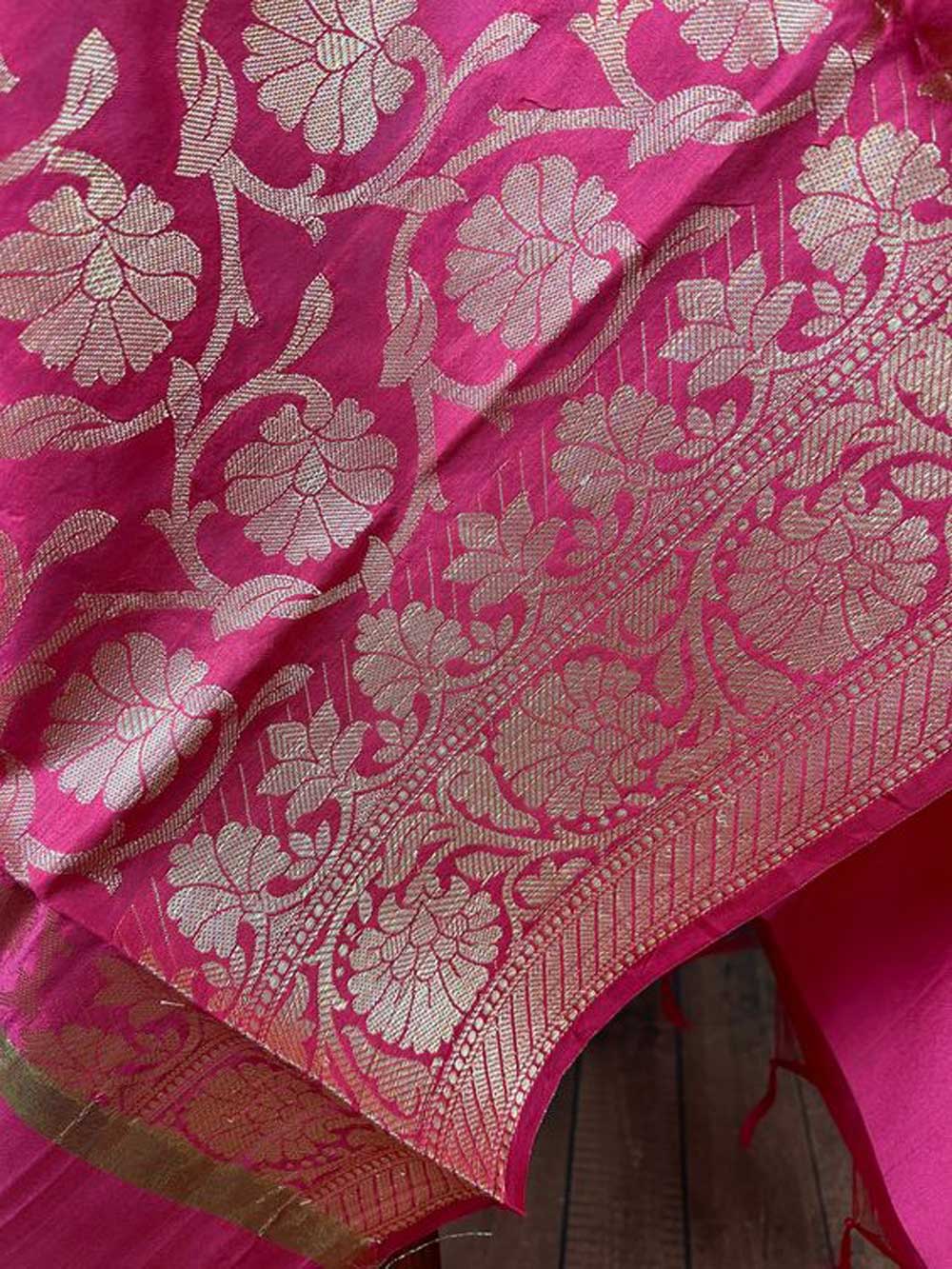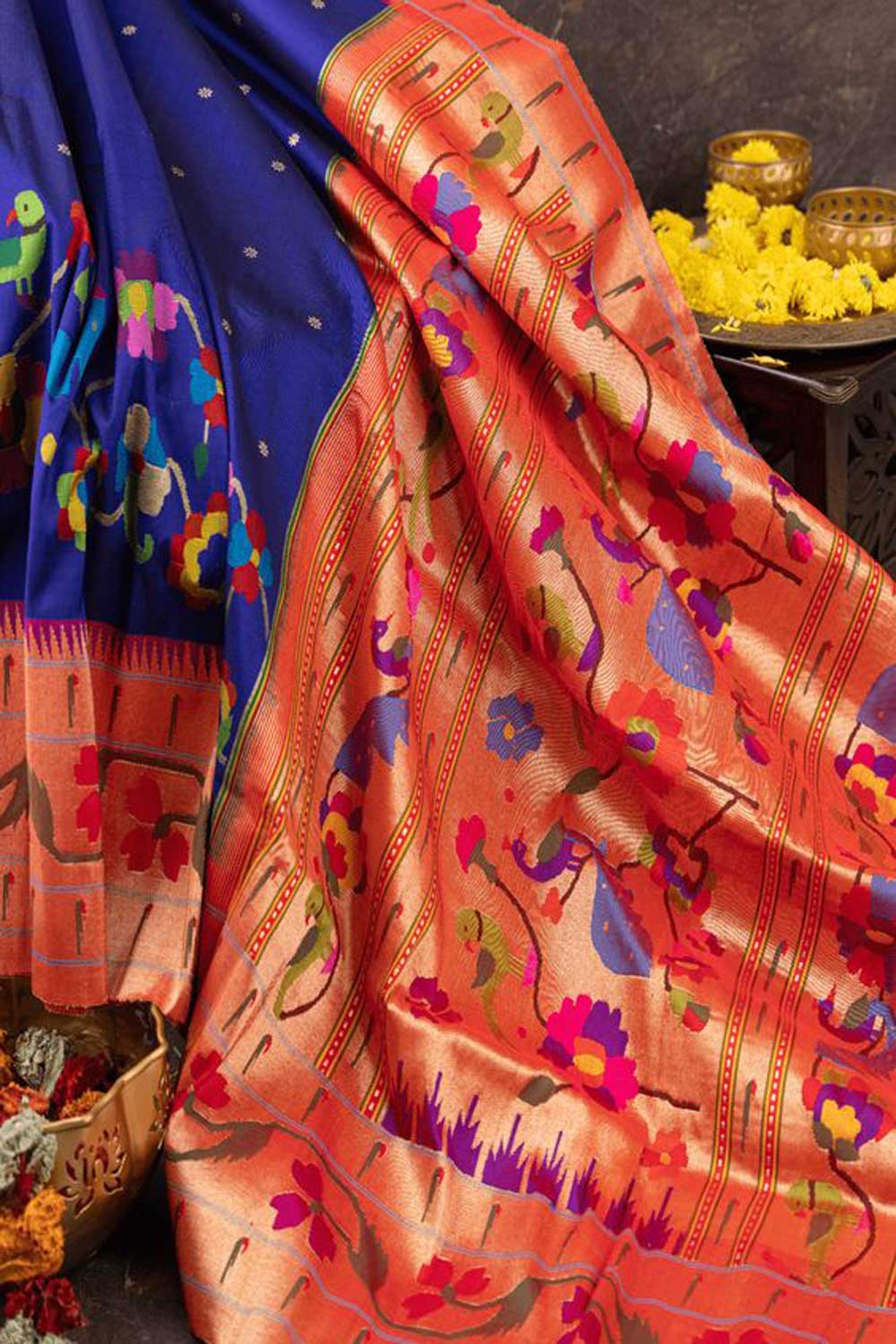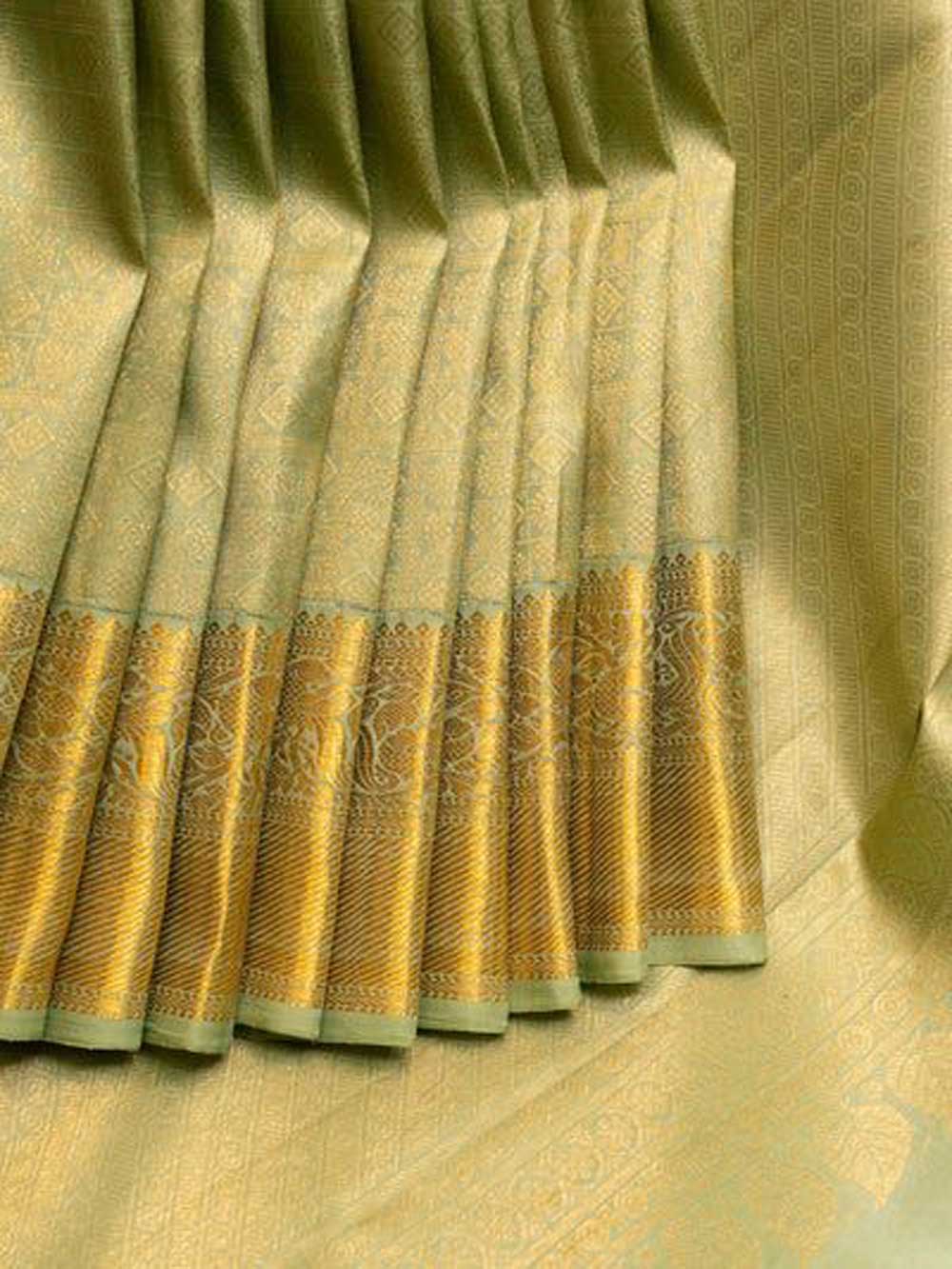
1. Banarasi (Uttar Pradesh)
Features: Banarasi sarees are celebrated for their rich brocades with intricate designs in gold and silver zari. They often feature motifs inspired by Mughal art, such as flowers, leaves, and human figures. These sarees are highly valued for weddings and festive occasions.
2. Chikankari (Uttar Pradesh)

3. Paithani (Maharashtra)
Features: Paithani sarees are known for their luxurious texture and vibrant colours. They feature intricate zari borders and pallu with traditional motifs like peacocks, flowers, and vines. The weave is characterised by a tapestry-like effect.
4. Patola (Gujarat)

5. Kanchipuram (Tamil Nadu)
Features: Kanchipuram sarees are distinguished by their rich texture, contrasting borders, and temple designs. They are woven using pure mulberry silk and often feature intricate patterns in gold and silver zari.
6. Mysore Silk (Karnataka)
Features: Mysore Silk sarees are known for their smooth texture and rich sheen. They typically have minimalistic designs with pure zari borders and pallu, giving them an elegant and classic look.
7. Taant (West Bengal/Bangladesh)
Features: The Taant saree, also known as Tant or Taat, is a traditional handloom saree celebrated for its lightness, comfort, and intricate design work. They are perfect for everyday wear and are admired for their breathability and softness.
8. Sambalpuri (Odisha)
Features: Sambalpuri ikat sarees are famous for their unique tie-dye technique, where threads are tie-dyed before weaving. The sarees feature traditional motifs like shankha (shell), chakra (wheel), and phula (flower).
9. Chanderi (Madhya Pradesh)

10. Muga Silk (Assam)
Features: Muga silk is known for its natural golden sheen and durability. The fabric is woven from the silk produced by the endemic Muga silkworms, making it unique and highly valued.
11. Manipuri (Manipur)
Features: Manipuri sarees often feature bold and colourful designs with traditional motifs. They are handwoven and are known for their distinct and vibrant patterns.
12. Pochampally Ikat (Andhra Pradesh/Telangana)
Features: Pochampally ikat involves a complex dyeing technique where the threads are dyed before weaving to create distinct patterns. The designs often feature geometric shapes and traditional motifs.
13. Kasavu (Kerala)
Features: Kasavu sarees are characterised by their off-white colour and gold borders. These sarees are typically worn during festivals and special occasions, symbolising purity and elegance.